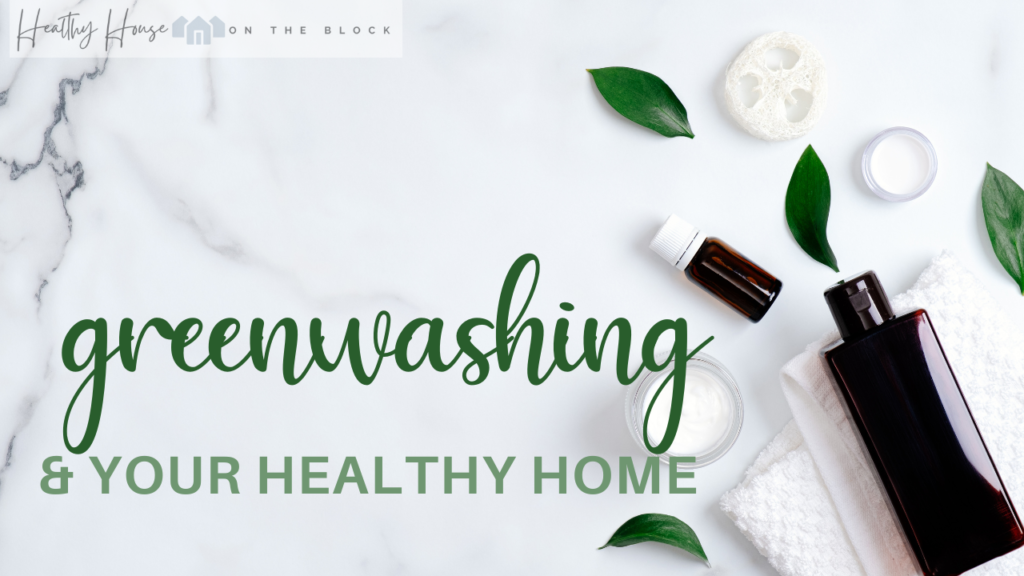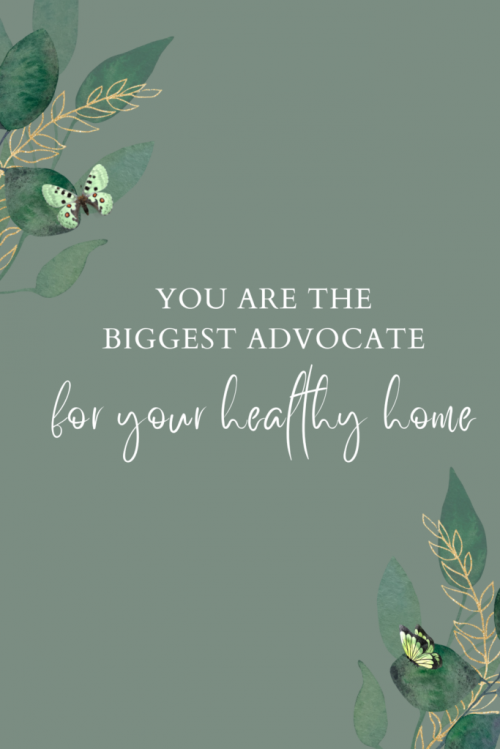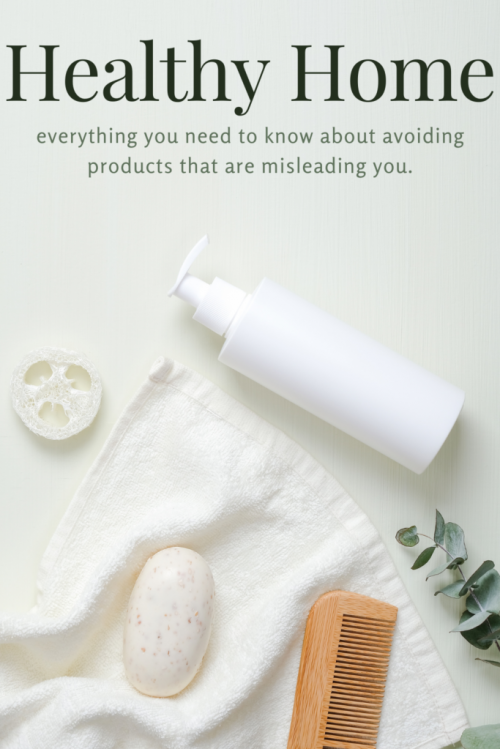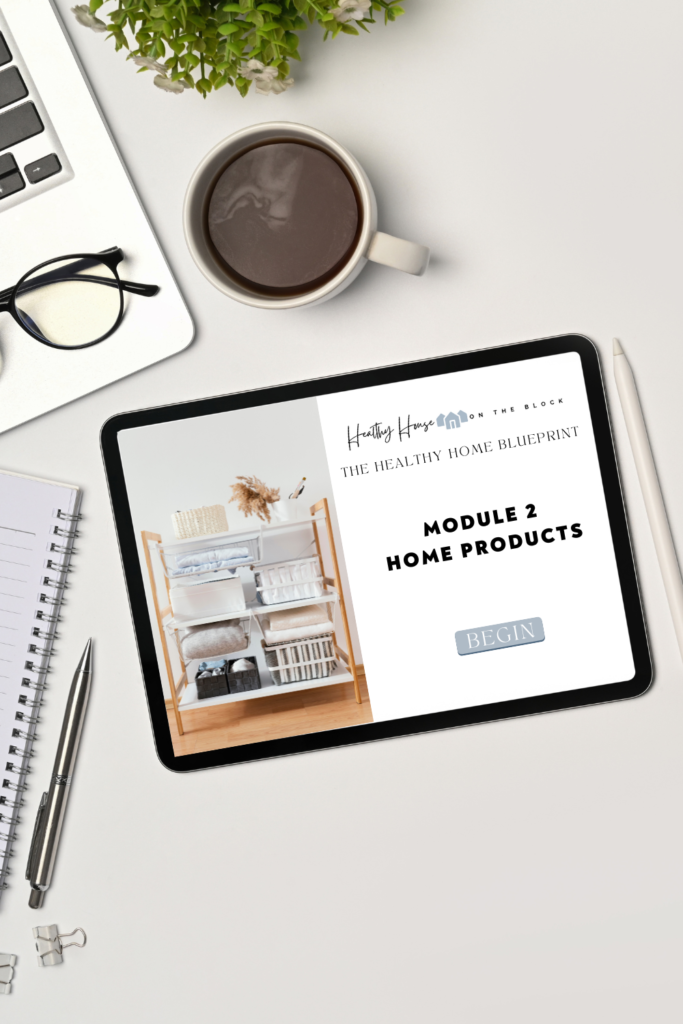
Generally, I am a trusting person right off the bat. When it comes to meeting people, I’m someone who trusts whole heartedly right away that everyone is good. I also used to be this type of person with products and foods that I bought. I saw something on a label and would never think that someone would be deceitful in their marketing. Now, however, I’m definitely a more conscious consumer and someone who verifies before I buy certain things. Maybe it’s from past experience with brands that were clearly greenwashing their marketing, or maybe it’s just increasing awareness as I get older.
Either way, It has been a somewhat frustrating realization that I can’t just read a label or package and trust that it’s healthy for my home and my family. I think we want to believe that there is good everywhere in everything. I know personally I would want to believe that greenwashing really stems from ignorance of companies rather than misleading or deceitfulness. But the truth is that we as consumers really need to take our home into our own hands.
Afterall, chances are you are your home’s biggest advocate. There is no one who is going to care about the health and wellness of your home and family like you. So with that in mind, it’s time to take a moment and really look at what we’re purchasing for our house. But not in the sense that you think. It’s time to take back our right to choose just what we want to be in our homes. And it’s time to stop letting brands convince us with their marketing. Here’s all you need to know about how to spot a greenwashed brand and product. These tools are going to help you get a healthy home product or material without falling for greenwashing tricks and language.

WHAT IS GREENWASHING, ANYWAYS?
I’ve read a few different definitions of greenwashing over the years, and basically what it boils down to is a company using language in their marketing or products to make it seem like they’re environmentally friendly, healthy or safe to use, when that may not really be the case. I’ve also come to understand it can mean that a company spends more of their money and effort on the promotion of their product than on the environmentally friendly practices they advertise.
Either way, it boils down to the fact that some terms and words are completely unregulated in marketing. In fact, most words and phrases are not regulated at all on packages. A brand can truly add almost ANY phrase or word they want to their product without getting into too much trouble. It’s a frustrating, but very real problem we as consumers need to navigate, whether we know it or not.
Another little loophole that comes into play is the “Tradesecret” rule. Essentially a company that has filed for a Tradesecret patent does not have to disclose the ingredients within that product by law. This rule was created to protect special formulas and recipes from being copied, but it can make it very difficult to figure out if a product does in fact contain safe or healthy ingredients. It can even be difficult to find out what, if any ingredients are in a particular product when this Tradesecret rule comes into play.

TYPES OF HOME PRODUCTS & MATERIALS THAT AREN’T ALWAYS HEALTHY
The biggest culprit of greenwashing is cleaning products. And I mean cleaning products of ALL kinds. Bathroom cleaners, laundry detergents, window cleaners and everything in between. These products can use words like”green” or “natural” and it doesn’t mean one single thing.
Another grouping of products to watch out for are personal care products like soap, shampoo and lotions and deodorants. These are another group of products where people are generally looking for a “healthier” option, and the marketing department for these brands knows it. Be very careful when shopping for these type of products.
And finally, products like home improvement and maintenance solutions. Bug sprays, paints and flooring may advertise low VOC or even non-toxic, but again, those don’t mean the product is safe or healthy. It can sometimes mean that there is one component of the material that is non-toxic, but not the entire product, which in my opinion, can be deceptive.

HOW YOU CAN SPOT A GREENWASHED PRODUCT
A product that has zero certifications or third party checks on it is a huge red flag. And even then, understanding that not all certifications are equal in nature is JUST as important. Each third party certification hones in on a few areas of a product to ensure particular toxins are not being used.
You can also look for buzz words that have no true credentials or proof to back it up. Some really unregulated words that can get thrown into the marketing package might be:
- “Natural”
- “Non-Toxic”
- “Earth-Friendly”
- “All Natural”
- “Eco-Friendly”
- “Clean”
- “Biodegradable”
- “Ethical”
- “Green”
- “Cruelty Free”
A product that offers no ingredient list could also be a red flag, however, sometimes you can easily find an ingredient list on their website. If you can’t and they won’t offer you any sort of insight into what they’re using to create the product, I’d say that also is a red flag.

HOW TO FIND PRODUCTS THAT AREN’T GREENWASHED
My course, The Healthy Home Blueprint has the exact steps you need to take in order to find products that AREN’T greenwashed.
You’ll be able to follow my step by step formula to find products you love and can trust to be healthy for your home.
Let’s work together to help you create the HEALTHIEST house on the block with my step by step program:
The Healthy Home Blueprint
ULTIMATELY THE CHOICE IS YOURS, HERE’S WHAT YOU NEED TO REMEMBER
Remember that the true choice is yours and you shouldn’t get stressed about it. Stress is a HUGE part of a toxic lifestyle that we want to avoid. You don’t have to get products that are 100% toxin free as long as you’re okay with that. Sometimes a low toxin change is just enough to improve your home and lifestyle and unburden your body just a little bit.
But maybe you need to be as low toxin as possible to heal your body or to accommodate an ailment you or a loved one has. Either way, you can find what you need, you just have to do the digging and research ahead of time.
Here are some very important things to remember as you look at products and materials for your home and life:
VOCs aren’t a catchall for every toxin: While VOCs are a huge contributor to poor indoor air quality and body burden, it is not a catchall for every single toxin out there. Essentially, a VOC is a toxin, but not all toxins are VOCs. So a product that advertises VOC-Free is great in that regard, but it can still contain other toxins and chemicals that can be just as harmful to your body and space. It’s important to understand this and look at more than JUST VOCs.
You can ask questions and get more information: NEVER EVER be afraid or embarrassed to ask questions. What’s the worst that can happen? They might not be able to get you the information or share the information with you. (Which gives you a good idea about the product or brand anyways). You dn’t have to be demanding or annoying, but you can contact a brand or company regarding a product. They usually have people on their team who are there for JUST that reason.
And besides, it’s your home and you get to be the one who controls what comes inside. Without the knowledge of WHAT is inside a product, you are opening yourself up to some big potential toxins.
Make sure claims are for a product as a whole, not just a component: Some of the words we talked about that are greenwashing words are on packaging in reference to a particular component or ingredient. For example, if you were to buy a protein bar that used organic oats, but then contained almonds that weren’t organic, they could advertise “organic” or “organic oats”, but that doesn’t mean the whole bar is organic.
It’s the same with cleaning products and beauty products. They might tell you it’s got a natural or even organic component, but maybe not all of it is healthy.
Cross Check Databases: I wrote this post a few months ago, and it breaks down just how to cross check products that you are looking to buy. You can check each database as they all rate products differently to get a good idea of what is really safe and double check your own research work. Use databases like Clearya, EWG, ThinkDirty and MadeSafe to find a product you feel is healthy enough to come into your space.
Not All Certifications are Created Equal: Remember that if something is USDA Organic, this means something totally different compared to a product that is GreenGuard Certified. These third party certifications, while helpful when shopping, can also be confusing. Make sure you understand what each of the big certifications actually means when it comes to the type of product that you are looking to buy.
My new at-home course Healthy Home Blueprint (coming in 2023) will walk you through ALL these certifications and which ones are the best for which type of product.
Embrace a Transparent Company: Any company that is willing to share with you their ingredient list or detailed information about a product is one that I would start with. Brands like ECOS Paints that offer you a complete list of their paint ingredients aren’t embarrassed of anything they put inside their product. It’s a great starting off point as you can actually look up ingredients that you aren’t familiar with. Cleaning products that offer an ingredient list are another place I like to start.
It’s like someone giving you all the details BEFORE you buy because they also want you to be empowered with knowledge. They want you to know exactly what you’re getting so you don’t make a purchase without that understanding.
Greenwashing can be a really frustrating part of being a consumer, especially when all you wan to do is buy the best and healthiest products for your family and home. Knowing what to look for and being willing to research either a product or find a safe recommendation can help you in the long run eliminating toxins from your space.





